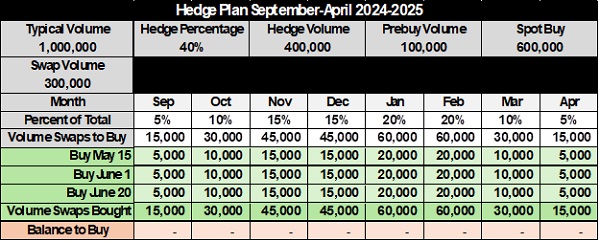Why propane traders should practice patience
The Organization of Petroleum Exporting Countries (OPEC) will meet Dec. 4 to discuss its strategies for supporting crude prices. Crude markets will likely experience volatility ahead of that meeting as crude traders try to determine their position. We expect OPEC will not make changes to its current strategy, so the meeting and all the positioning ahead of it will likely be much ado about nothing. Still, many traders will be compelled to take positions to guard against a possible surprise change in policy by OPEC.
After trading at more than $100 per barrel in 2014, crude prices began to fall. The decline in crude came as the global economy struggled and U.S. crude production increased. Historically, OPEC, in the role of the world’s swing producer, would have announced production decreases to keep crude prices from falling further.
Through the summer and fall of 2014, traders expected an announcement of a production cut from OPEC as prices continued to slide. The common theory was that most OPEC nations needed at least $60 crude to support government budgets, so something would surely happen soon. By November 2014, West Texas Intermediate (WTI) crude dropped below $80 per barrel.
But to mostly everyone’s surprise, OPEC started a new era for crude at its meeting that month when it announced it would not lower production and, instead, would fight for market share and let the market determine crude prices.
Immediately after that announcement, crude plunged. By January 2015, crude fell below $50 per barrel. Through the summer, crude seemed to find a floor. However, the floor was based on expectations, not fundamental realities. The expectation was that low prices were going to cut production and increase demand to the point of drying up an oversupply of crude that was running at more than 2 million barrels per day (bpd).
However, by fall, it was becoming more evident that the overwhelmingly bearish fundamental situation for crude was going to take a lot longer to correct than OPEC or anyone else expected. The result was another leg lower for crude prices. By August, new lows were set, with WTI closing at $38.24 on Aug. 24.
Some are questioning if OPEC made the right decision to change its role from the world’s swing producer to baseline producer. Much of the doubt comes from members of OPEC. Many countries within OPEC are suffering because of government budgets that are highly dependent on the price of crude. Most are running significant budget shortfalls and many in the organization have been calling for OPEC to once again limit production.
To some degree, OPEC’s strategy has worked in that it is pushing high-cost projects, primarily crude production from shale formations and deep-water drilling, out of the market. However, Russia is going toe-to-toe with OPEC in fighting for market share. Russia has similarly low production costs compared to OPEC and it is believed most of its production can be produced at a profit down to $35 per barrel. Russia is the world’s largest crude exporter and has been increasing its record production on a regular basis.
To make matters worse for OPEC, sanctions against Iran are expected to lift sometime next year. That could add another million bpd of crude to an already oversupplied market.
It appears the current strategy for OPEC is likely to continue for a while longer. Saudi Arabia and other OPEC powerhouses will not change their “market share” strategy unless other global producers, primarily Russia, also join in production cuts. Russia has shown no sign it is willing to cooperate. When Russia agreed to production cuts with Saudi Arabia in the past, it sold its crude through back channels. To say that Saudi Arabia does not trust Russia is a major understatement.
Barring any surprises at OPEC’s Dec. 4 meeting, it is as likely as not that crude will set a low during 2016 that will be lower than the $38.24 low of this year. Right now, one has to be prepared for a prolonged period of low oil prices, which means a rather conservative approach on propane supply management. Propane traders must be patient until they see a change in the crude or propane fundamental landscape.
Cost Management Solutions LLC (CMS) is a firm dedicated to the analysis of the energy markets for the propane marketplace. Since we are not a supplier of propane, you can be assured our focus is to provide an unbiased analysis.
For more Cost Management Solutions analysis of the energy market that helps propane retailers manage their supply sources and make informed purchasing decisions, visit www.lpgasmagazine.com/propane-price-insider/archives/.

















